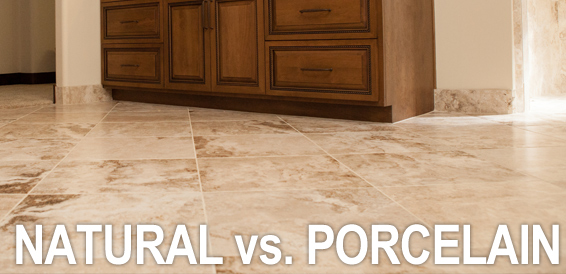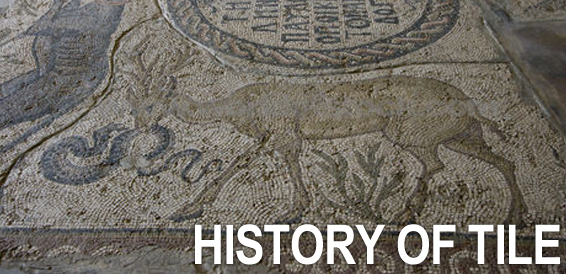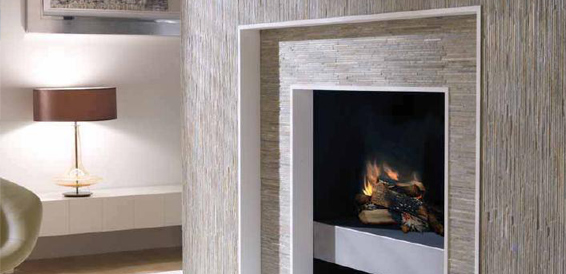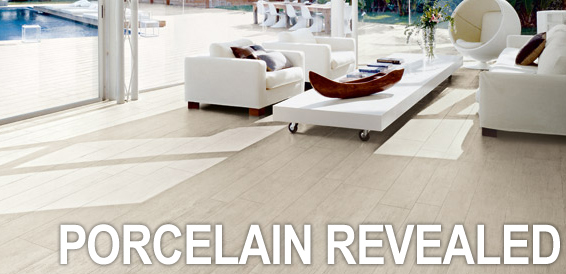Natural Stone and the Reemergence of Porcelain Tile
What are the differences between stone and tile, and which one should I choose? In my many years of working in the tile and stone industry, this is a question I have heard frequently. Most tile on the market today is glazed porcelain tile, which is a durable type of ceramic tile. Stone, on the other hand, is natural and is generally limestone, travertine, or marble. While both tile and stone have pros and cons, the answer truly lies in what you as a customer need for your home or business space.
Many people hear “porcelain tile” and immediately assume that it is fragile or delicate. In fact, porcelain tile is very different from a porcelain doll or vase. Porcelain tile is significantly more durable than other types of ceramic tile on the market. Glazed porcelain tile consists of a clay body with an overglaze. The clay body is a sturdy base for the tile, which is then covered by the overglaze. The overglaze is a glass-like coating that goes over the clay body and is fired at around 2000 degrees. Because the glass-like glaze is fired on, it does not have to be resealed and the glaze will stay for the life of the tile. The only maintenance needed is basic housekeeping—sweeping and mopping—to keep the tile clean.
Natural stone is just that—completely unaltered. Glazing is a man-made process, so a glazed stone would, by definition, no longer be natural stone. However, in order to preserve the stone, it must be protected by a sealer after installation. Each stone requires a specific sealer based on its density or texture. Limestone, travertine, and marble all consist of the same basic ingredient and therefore generally require the same sealer. Because sealer for natural stone is not fired on, it does not have the same lifetime durability as porcelain tile, so the stone must be resealed approximately every five years maintain its quality.
Glazed porcelain tile consists of two portions—the clay body and the overglaze—which means that the clay body is generally a different color than the overglaze. Though its durability means it is difficult to chip a glazed tile, a chip or crack would usually reveal a secondary color underneath. Because stone is natural, a chip or crack made in stone will show that the color goes all the way through—there is no other color or material underneath.
More and more today, tile is being made to look like natural stone, to the point where a single tile placed next to a piece of travertine could look almost identical. However, the tile is still manmade, meaning eventually the pattern will repeat. An inexpensive stone-look tile could repeat the pattern every tile. Meanwhile, a more expensive tile could have such a wide degree of variation that you may never see the pattern repeat. However, at some point with every manmade tile the pattern will repeat. With natural stone, a repeat pattern is not possible because it is completely one-of-a-kind.
The technology of creating manmade tile has advanced greatly in the last few years. Porcelain tile, which was usually only used in less expensive homes, is now being used in high-end homes. Homeowners no longer feel like they are compromising the overall look and quality when choosing porcelain tile over natural stone. Today we actually sell more porcelain tile than natural stone, whereas a few years ago we sold far more natural stone than tile.
As price goes, both tile and stone have a wide range depending on quality. Floor tile starts out much less expensive than stone, and stone will go much higher in price than tile. There is a wide middle ground where the cost of tile and stone overlap. However, stone costs far more to install. It requires a more difficult installation and must then be sealed. This means that even if you buy stone at the same price as tile, it will end up costing more.
If you want something completely natural in your home, then you will never be happy with porcelain tile. Stone is truly natural; all we have done is cut it into conveniently sized squares for installation in your home. However, if you aren’t concerned with having a completely natural stone, porcelain tile has greater durability, easier maintenance, and can be far more practical. With all of the benefits of both tile and stone, it truly comes down to a decision on your part based on your budget and the needs of your home or business space.





